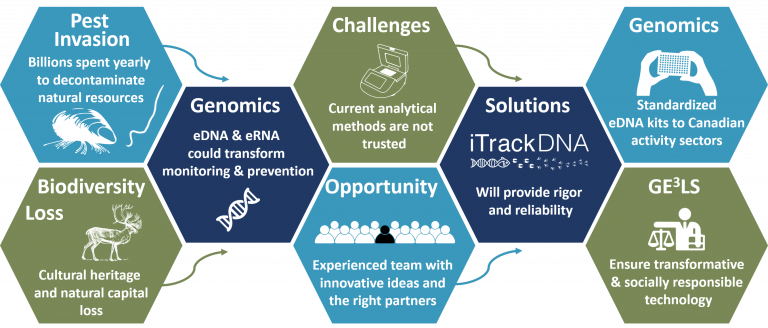The overarching goal of iTrackDNA is to decrease uncertainty in environmental monitoring and assessments through the following objectives:
1)
promote standardization of eDNA methods;
2)
reduce ecological survey time and costs;
3)
create widely available software for modeling regional biodiversity;
4)
raise End-User proficiency regarding the use of eDNA methods;
5)
promote mainstream eDNA best practices in management, policy, and regulations.

Through a comprehensive, inter-sectoral approach, the iTrackDNA project directly establishes a rigorous eDNA framework with the following novel innovations:
1)
incorporation of multiple specific End-User engagement points in designing and conducting this scientific project;
2)
development of DNA resources, including conservation-compatible mitogenome protocols, bioinformatics, and interpretive frameworks;
3)
generation, validation, and application of modular targeted eDNA and eRNA detection kits;
4)
application of experimental and ecotoxicogenomics approaches to understand factors influencing eDNA/eRNA detection;
5)
use of eDNA-specialized drones for water sampling;
6)
development of user-driven training, certification, and inter-lab comparison modules;
7)
incorporation of cognitive mapping in eDNA surveys;
8)
partnership with the Canadian Standards Association (CSA Group) for national targeted eDNA assay standard development enabling eDNA methods uptake.

